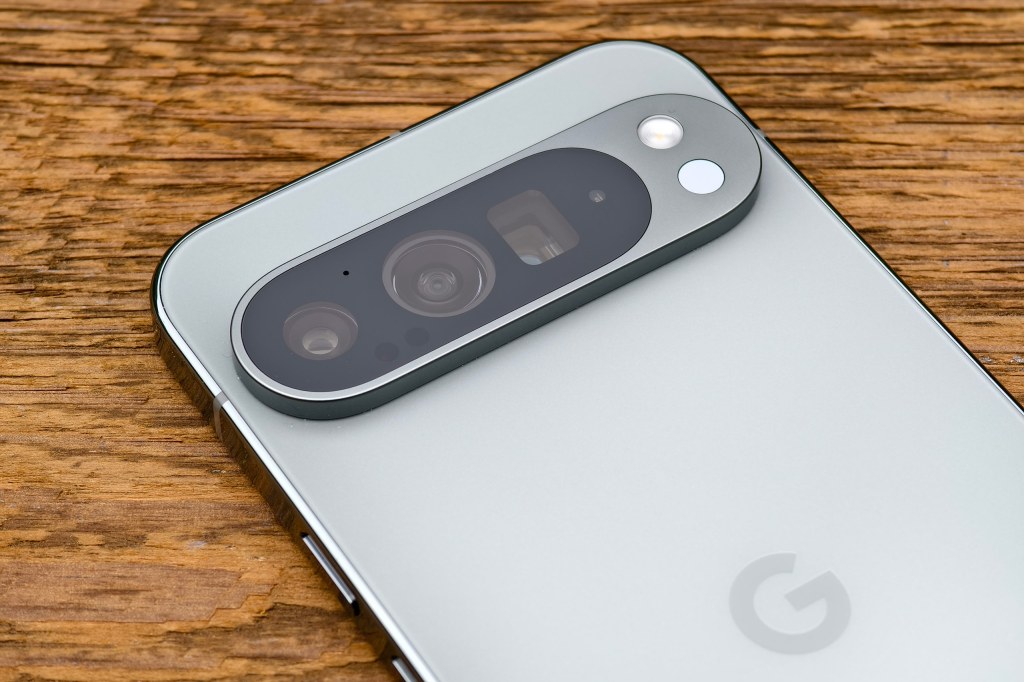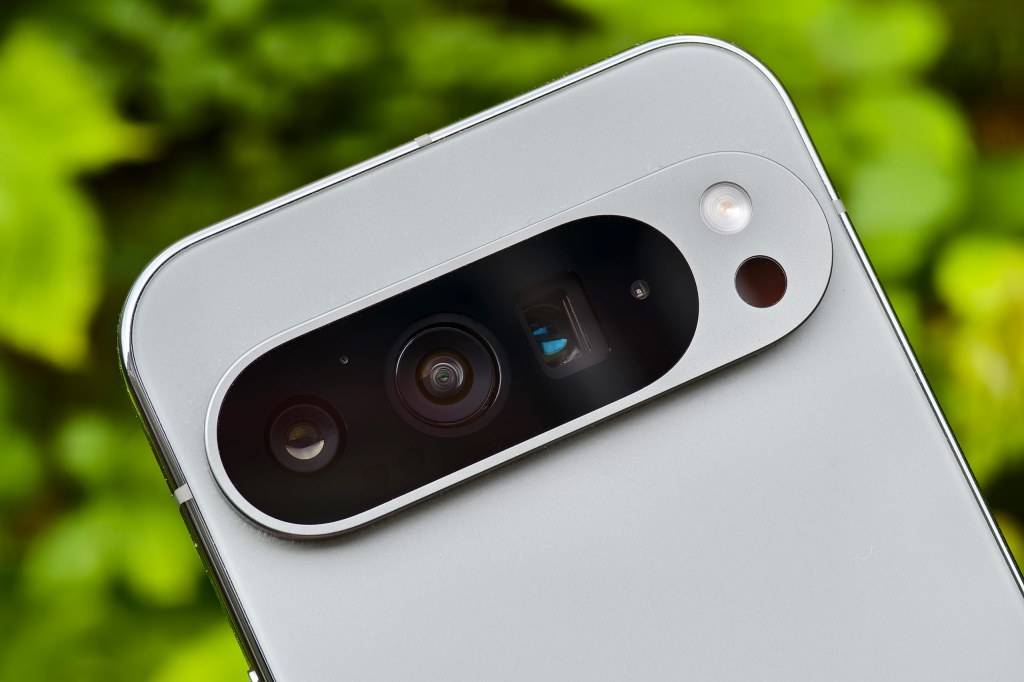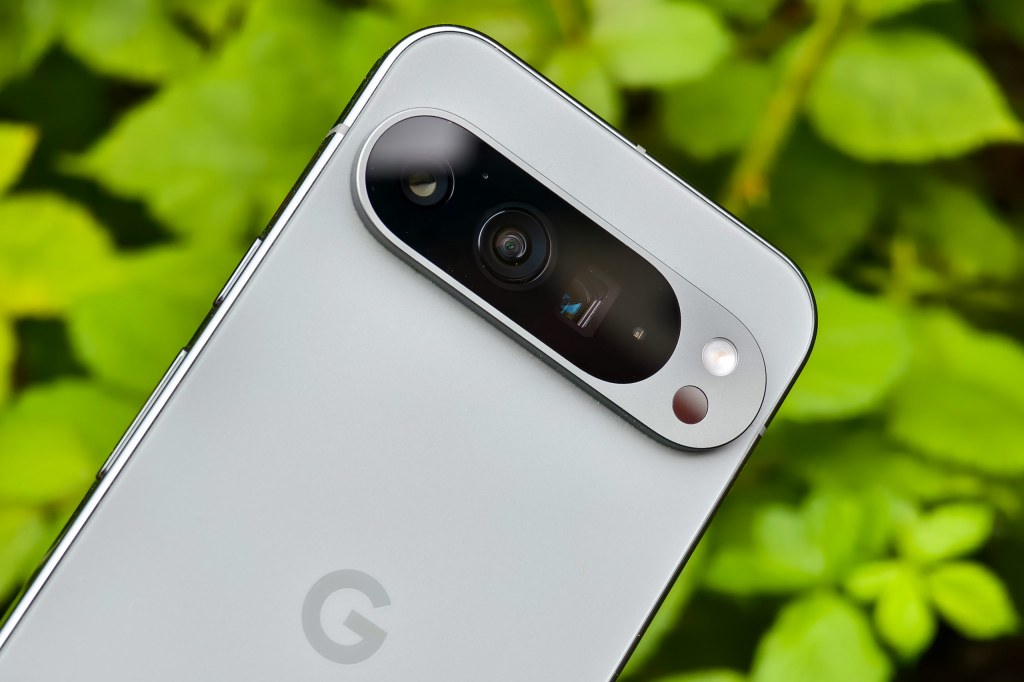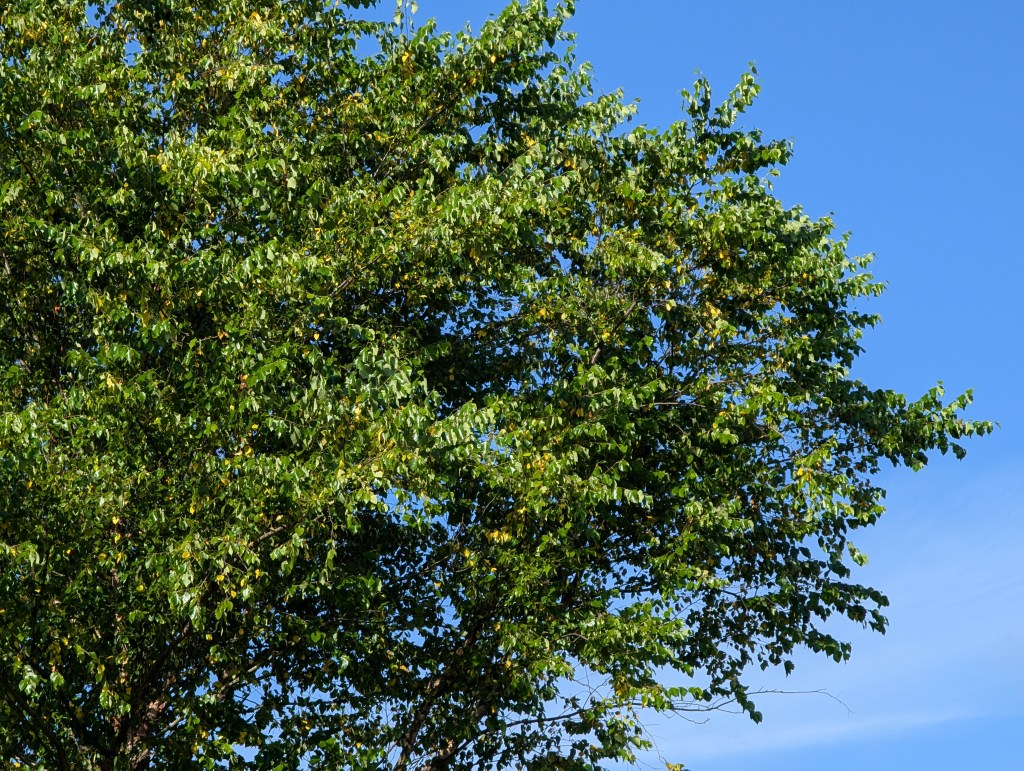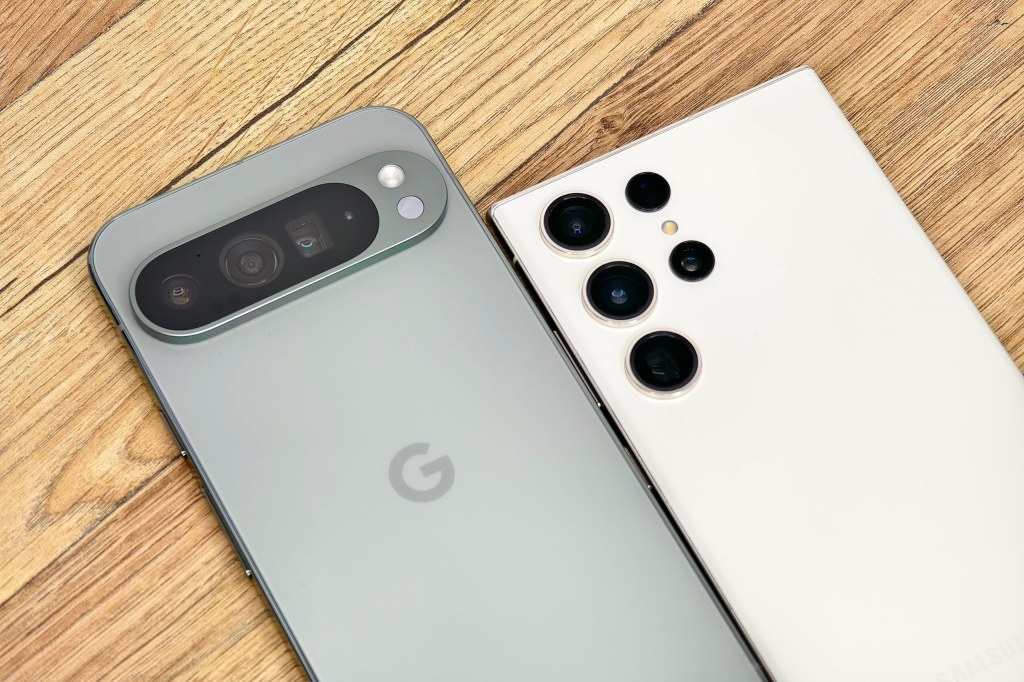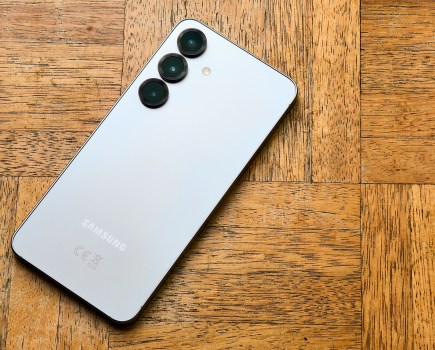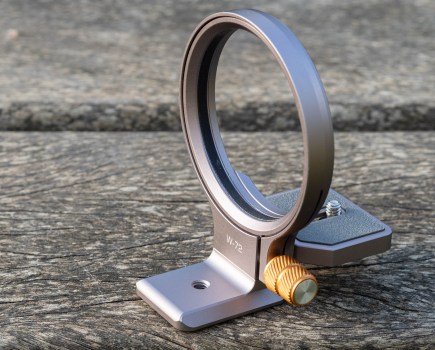Amateur Photographer verdict
For photographers, the Google Pixel 9 Pro XL delivers exceptional photos, in the majority of shooting scenarios. However, if you’re a macro or video fan, then others are better.- Additional AI features like Add Me are great
- Consistently good photos
- Updated selfie camera
- New panorama mode works well
- Larger 6.8inch screen
- Macro performance is average at best (lacking telephoto macro)
- Puny 128GB storage, more storage costs more
- Only 4K video recording, 8K requires Cloud upscaling
- No 4K 120fps video
Google’s Pixel 9 Pro series is the current flagship range of camera phones from Google, but does the larger Pixel 9 Pro XL justify a place among the best camera phones for photography. I find out the pros and cons of this phone in this detailed review.
At a glance:
- 50MP main camera, f/1.68, OIS (1/1.31inch)
- 48MP ultra-wide, f/1.7, with macro AF (1/2.55inch)
- 48MP telephoto, f/2.8, 5x telephoto, OIS (1/2.55inch)
- 42MP f/2.2 selfie camera with AF
- 4K video recording, up to 60fps
- Cloud based upscaling powered by Video Boost should provide 8K video
- 6.8inch screen, 1-120hz, 2000/3000nits, Gorilla Glass Victus 2
- 5060mAh battery
- Google Tensor G4 processor, 16GB RAM
- New colours: Porcelain (off-white), Rose Quartz (Pink), Hazel (pale grey), Obsidian (Black)
There was already a large Pixel – the Pixel 8 Pro has a 6.7inch screen, the Pixel 9 Pro XL has a slightly larger 6.8inch screen, and the 9 Pro is a new “mini” Pixel Pro model, with 6.3inch screen.
How we test phones
We review smartphones from the perspective of choosing one for its photography and camera performance. We look at what the Google Pixel 9 Pro XL offers, and the features included for photography and video, paying particular attention to the cameras on the phone, photo editing capabilities, the output from each different lens, and features offered.
Features, Hardware and Design
Google say the build quality has been improved with a stronger aluminium construction, and they say this makes the phone 2x more durable. There’s Gorilla Glass Victus 2 on the screen to provide scratch resistance.
In terms of the cameras on offer, the Pixel 9 Pro XL offers the same camera setup as the Pixel 9 Pro, which is the new “small” flagship phone from Google, with a 6.3inch screen.
The cameras feature an ultra-wide-angle (0.5x) camera, a main wide-angle camera (1x) with optical image stabilisation (OIS) and a 5x telephoto camera, also with OIS. In addition, the main camera offers a 2x zoom that Google say gives the same image quality as a real 2x optical camera, and they also say they offer the same image quality as a 10x telephoto camera from the 5x camera, let’s find out if that’s true.
This zoom feature uses Google’s hybrid Super Resolution zoom multi-shot technology, which Google have been offering for many years now, and as long as you don’t use too much zoom, then the results have been impressive, even giving Google’s phones without telephoto zoom, like the Pixel 9, 8, 8A etc, a good 2x zoom option.
The ultra-wide-angle camera is now brighter with an f/1.7 aperture, compared to the Pixel 8 Pro’s f/2.0 aperture. This also features auto-focus, and can be used to close-up macro photos.
Selfie fans will be pleased to hear that the selfie-camera has been updated, and this is now a 42MP f/2.2 selfie camera, with focus (PDAF), compared to the 10.5MP camera on the Pixel 8 Pro. It’s also wider, with a 17mm equivalent rating, compared to 20mm on the 8 Pro.
This camera uses pixel binning to give (you guessed it) 10.5MP images. The hope here is that they’re using a larger sensor, giving improved low-light performance. However, Google don’t specify the sensor size in the specifications.
The HDR+ feature has been updated, which Google say has been ‘built from the ground up’ but also based on Google’s 9 years of experience. Google claim this results in improvements all-round, with better tones, (including more accurate skin tones), improved exposure (including shadows), sharpness, detail, contrast, tone mapping, white balance, and more.
Google state that there are also improvements in low-light performance, with the added ability to take Night-sight panoramic photos, which gives up to 50MP panoramic photos.
Best Take, as introduced on the Pixel 8 series, lets you take photos of people and then select from different options for the best shot of the subject’s face, with the phone automatically replacing the face in the image. This works well, and can be really useful for group shots. There are more AI features, which we’ll cover shortly.
Hardware and design
There’s a 5060mAh battery and the phone supports up to 37W charging, as well as wireless charging. Google say that the new phones should deliver nearly 20% better battery life compared to the 8 series.
There’s a larger screen, at 6.8inches, compared to the 6.7inches on the 8 Pro, and you’ve also got upgraded RAM, with 16GB instead of 12GB. Google say this helps them run more AI features on the phone, rather than having to send it to the cloud so much. However, some AI features still require an internet connection, and cloud processing.
In terms of storage, the base model has 128GB, which feels like a small amount for a flagship phone, especially as it’s only 109GB available for your photos and videos etc, due to the Android OS taking up some of the space.
You can get 256GB, 512GB, and 1TB versions if you’re prepared to pay more, but it’s a shame it doesn’t start at 256GB or 512GB as standard.
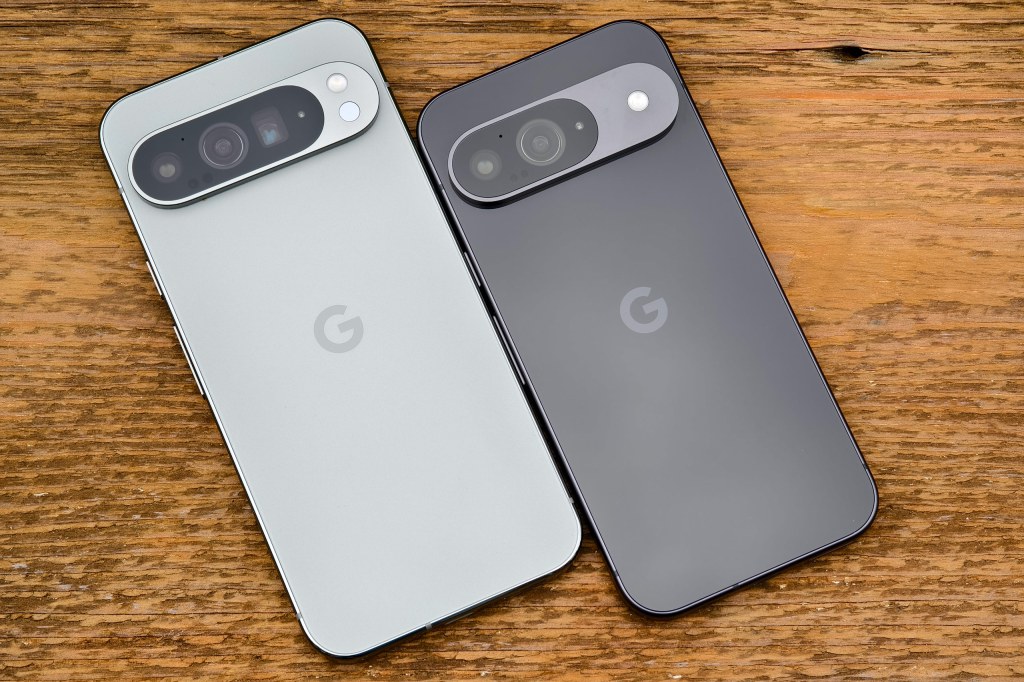
The camera app…
The camera app layout will be familiar to users of previous Google Pixel phones. To the rest of us, it’s not too different from other phones, though a little more simplified compared to Samsungs. It’s generally easy to use, and easy enough to get used to.
The number of shooting modes available continues to increase, and it means it can take a little bit longer to find the shooting mode you want. These are found along the bottom of the camera app, and you’ll find Photo in the middle, as the default mode.
From left to right, there is: Action pan, Long exposure, Add me, Portrait (with 1.5 and 2x options, but no 5x option), Photo (as previously mentioned), Night sight, and Panorama. In the photo mode you can access manual settings which includes brightness, shadow, white balance, focus, shutter speed, and ISO.
These manual controls are available on the Pro models, which is worth noting, as it’s not available on the non-Pro models. This is a shame, as a software feature, it seems a shame to deny this feature people who don’t have the money for the Pro models. You’ll also find the option to shoot raw, if you so wish.
At the bottom of the camera app, there’s a switch letting you switch between photo and video mode.
Video options include options for the resolution, frame rate, 10-bit HDR, video stabilisation, macro, and importantly for the new 9 Pro XL, Video Boost. Video Boost lets you record video, and then process it later in the cloud for improved video quality, as well as upscaled 8K video.
AI features keep growing…
There are a lot of AI photography features built into the phone, and the cameras specifically. These AI features include: Action pan, Long exposure (great for light trails, waterfalls, running water etc), Add me, Portrait (background blur), and Night sight (which includes long exposure astrophotography features), and these are available when taking photos.
Add me is a new feature that helps you take group photos with you in the same shot. You first take a group photo (without you in the frame, because you’re taking the photo), then you can go and enter the scene, with the person who was in the first shot now taking the photo with you in it, and the phone will cleverly merge the image together.

It’s all rather clever, and makes it really easy to use, explaining how you use it while you’re taking the photo. However, it can look unnatural if the lighting conditions change (or if the phone changes the exposure) while you’re taking the photo. You can also end up with subjects looking too big or small, depending on positioning in the frame.
There are a number of AI features available in playback, where you’ll find editing tools including: Portrait blur, Unblur, Zoom enhance, Magic eraser, and these work on the phone. You don’t need to be connected to the internet to use these features.

Beyond this, there’s also Magic Editor, which you do need an internet connection to use. In fact, you need to have backed up your photos to Google Photos online storage, before you can use this feature on any photo. If you don’t have enough space on your Google cloud storage, or haven’t paid to upgrade it when it’s filled up, then you won’t be able to use these features. Magic Editor has been updated to include ‘Reimagine’ which adds more generative AI photography tools.
Video Boost is another AI feature, that, currently, is entirely cloud based. Once enabled on the phone, you can record 4K video, and have it processed by Google (on the cloud) for enhanced video, as well as upscaled 8K video (if you’ve selected the “8K” option on the phone). More on this later.
Performance and Image Quality
In good light, the Google Pixel 9 Pro XL gives great looking images, and colours aren’t as heavily saturated as other brands, such as Samsung and others. The on-screen camera options include the 0.5x, 1x, and 5x cameras, as well as 2x which is Google’s digital hybrid zoom. To access the 10x zoom you need to pinch to zoom.
In bright sunny conditions, all three cameras perform well. In grey conditions, images can look a little bit dull, but this is also more realistic looking compared to too much colour saturation. In bright sunny conditions, most phones perform well, and it’s in lower light conditions where you begin to see the weaknesses of camera systems on phones.

In low-light the ultra-wide-angle camera has done a good job of capturing this scene, however the image is a little bit soft, when looking close-up. The ultra-wide-angle camera can also display purple fringing in the corners of the frame, for example in tree branches and leaves.
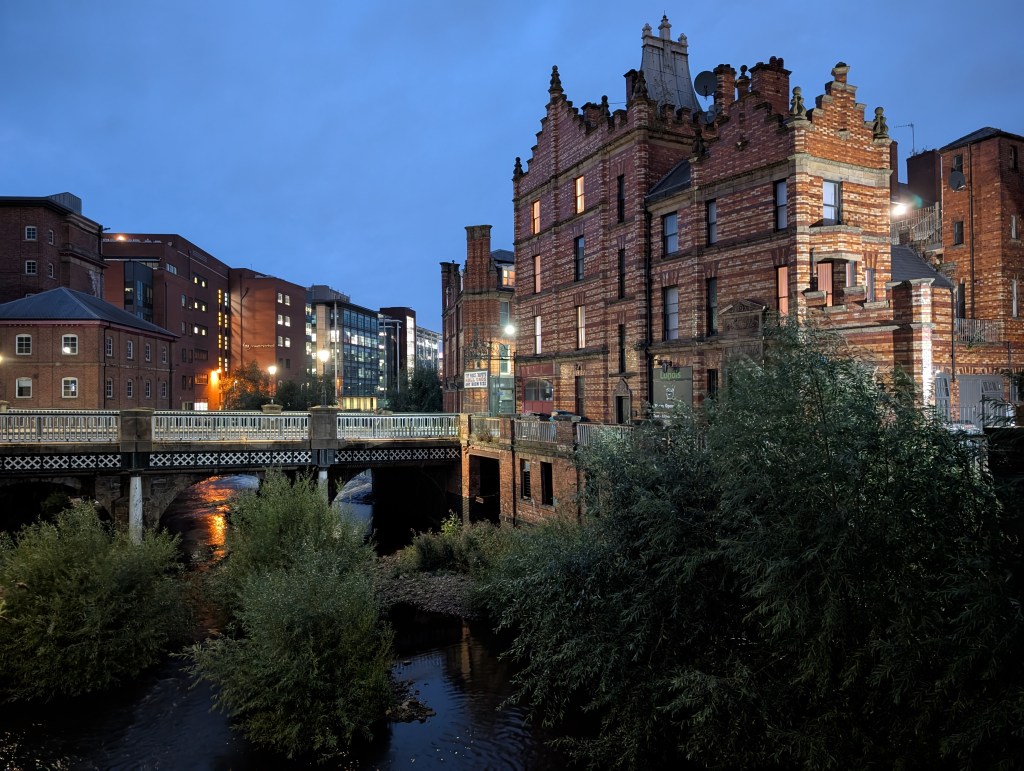
The main camera gives a steady shot, even with a slow shutter speed of 1/10s, and even with a relatively high ISO speed of nearly ISO 1500, noise is well controlled.
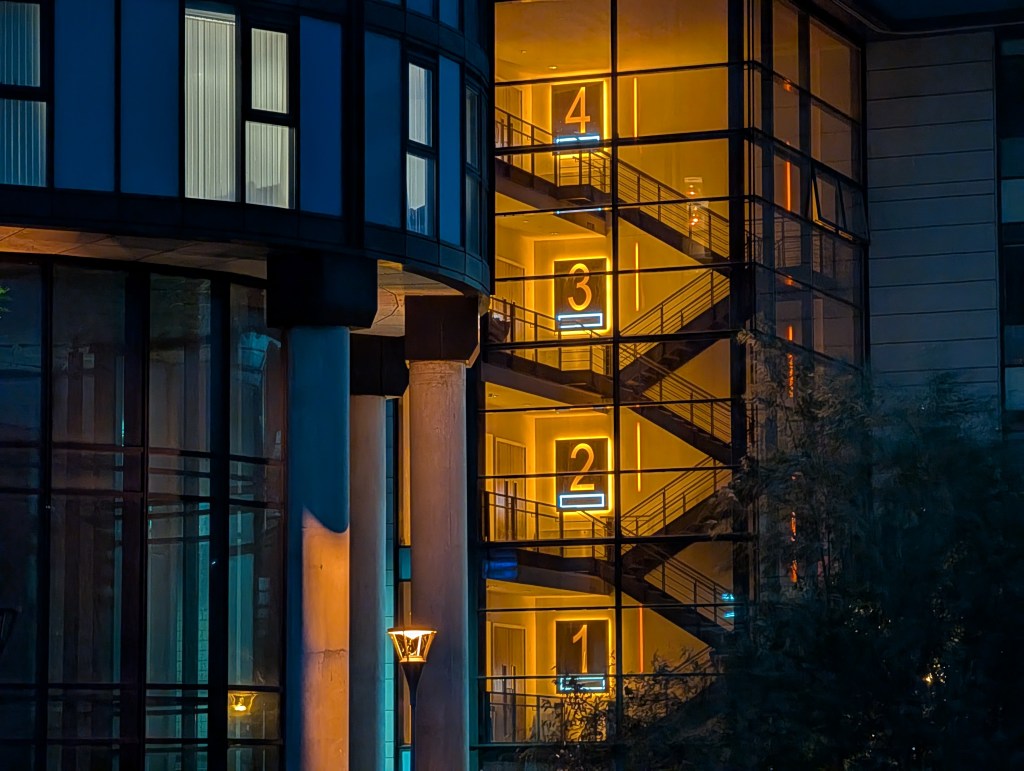
The 5x telephoto camera does a great job in good light but again, like the other cameras, image quality drops when shooting in low-light, with this image lacking in detail. It looks good when used on this page at a reduced size, but if you view this larger, you’ll see it’s definitely lacking in detail.
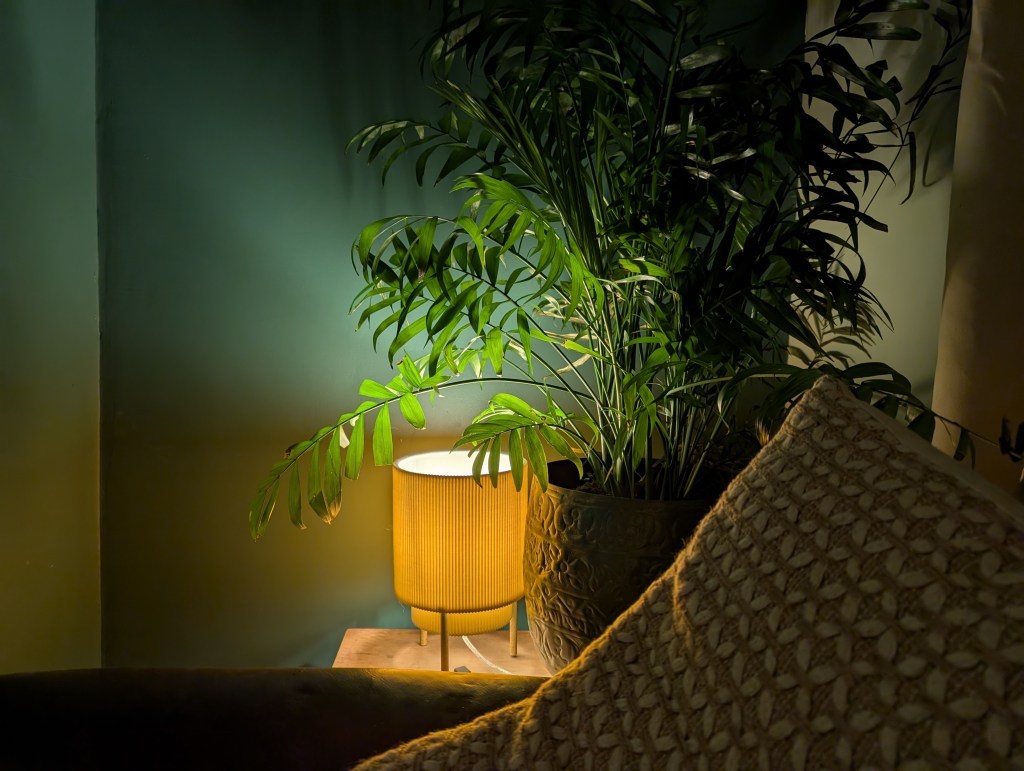
In low-light, the main camera performs the best, and the phone has done an incredible job of reproducing the colours in this scene. In comparison other phones, from main brands, really struggled to capture the lamp colour correctly, as well as the dynamic range in the shot.
10x telephoto zoom

Google’s claims that it offers the same ‘optical quality’ as a 10x telephoto camera, using the 5x camera (and zoom) and rather impressively, I found that it does actually offer images that are on a par with the 10x telephoto camera on the Samsung Galaxy S22 Ultra, if not slightly sharper and crisper (especially on first glance). The 2x zoom options also does a good job in good light, but like all cameras (real or digital), as light levels drop, image quality also drops.
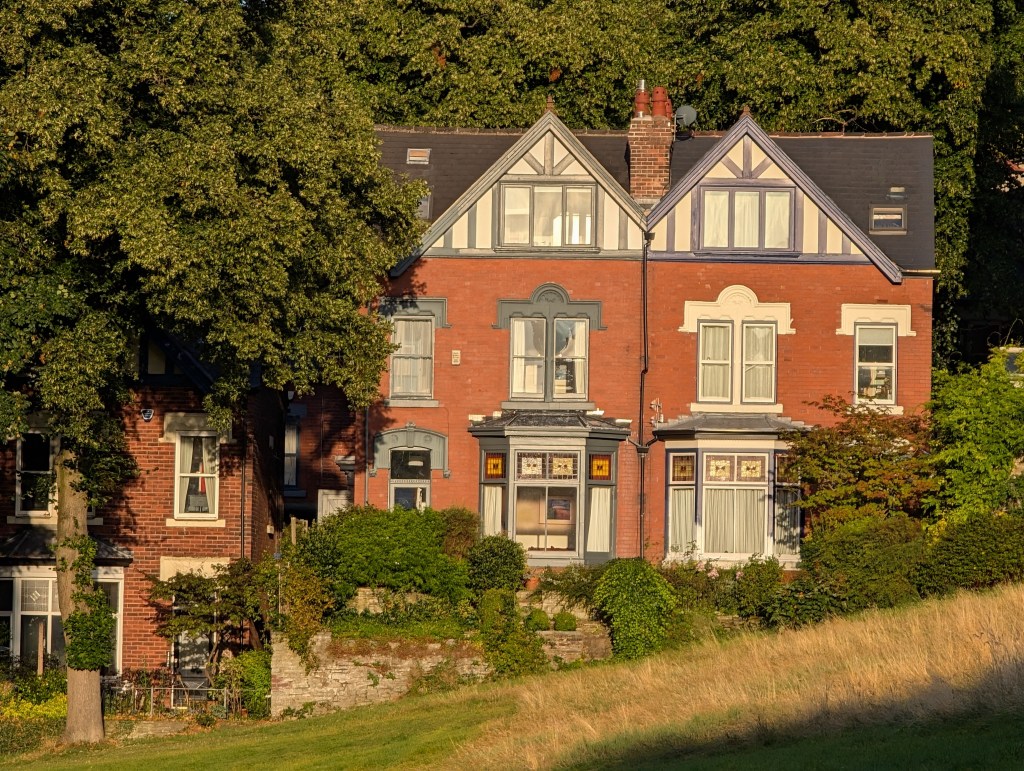
Macro performance
When shooting close-up photos of subjects, the camera will automatically switch to the ultra-wide-angle camera, and this crops into the image (roughly 2x), and the results lack detail and crispness. Shooting with this lens also means you’re very likely to block the light on the subject, further degrading the look of your photo.

This is a shame, as we’ve seen incredibly impressive results from camera phones that use a telephoto periscope camera for macro photos, like on the Xiaomi 14 Ultra, Vivo X100 Pro, and others (OnePlus, iQOO etc), which give a more natural look, as well as allowing you to shoot further away, so that you’re not blocking the light.
The new selfie camera
The selfie camera has been updated to a 42MP unit, that uses pixel binning to give 10.5MP images. With auto-focus, the results are good, and look pleasing even when the portrait mode hasn’t been selected. If you do use the portrait mode, then you can have the background blurred. Alternatively you can add blur after you’ve taken the photo.
Video recording
Video is recorded with HDR+ automatically applied for expanded dynamic range (when using the main wide camera). Video quality, in terms of detail, colour, and stabilisation looks good. However, we noticed a slight hiss on the audio, which was present even when recording in quiet environments. The highest resolution and frame rate you can record on the phone is 4K at 60fps. You can not record 8K video on the phone, and there is no 4K 120fps option. You can also use up to 20x zoom in video, but the quality is poor, as you’d expect, but can be improved using the Video Boost feature.
If you do want 8K video, then you’ll need to switch on the Video Boost option, and let Google create the video for you. 8K video is upscaled from 4K, and Google say you can then pull 33MP still images from the footage, which makes sense as 8K is 33MP. In order to upscale the video to 8K, your phone needs an internet connection. It then needs to backup your entire video to the cloud before it can upscale it. This will eat your data (or Wi-Fi) connection, as well as fill up any Google cloud storage you have, and could potentially take a long time.
When you do record with Video Boost on, the phone records an unprocessed video file, without electronic image stabilisation switched on, and without any image/colour processing. With Video Boost switched on, you can use 1x, 2x and 5x while recording, and you can also pinch to zoom all the way to 20x zoom, then when the video is processed by Google you’ll get back a video with improved image quality. With Video Boost and 8K selected you can only use the 1x main camera, or the 5x telephoto camera, and this must be set before recording, as you can’t zoom or switch between the cameras whilst recording.
You get two files, a Full HD, stabilised video, as well as the unprocessed (4K) video file. It looks like you’re getting an almost raw video file, without any LUTS applied, however, with (electronic) image stabilisation switched off, the footage can be quite shaky.
Value for Money
The Google Pixel 9 Pro XL is available for $1,099 / £1,099 (128GB), $1,199 / £1,199 (256GB), and $1,319 / £1,319 (512GB), some regions will also get a 1TB option.
Compared to the nearest alternatives, the Samsung Galaxy S24 Ultra has some impressive features, including an anti-reflective screen (nothing seems to have beaten or matched this yet), 8K video on the phone, 4K 120fps slow-motion video, as well as both a 3x telephoto camera, and a 5x telephoto camera. Other brands, like Vivo, Xiaomi, and others let you use the telephoto camera for macro photography, and the results are impressive.
The amount of storage provided is stingy and ungenerous in this day and age, where you’re spending $1099 / £1099 and getting 128GB. You get 128GB with entry-level phones from Samsung that cost around $250 / £250 or less. To get an amount that is useful for a flagship phone, that you want to last for many years, 512GB should be the standard, yet this will cost you $1319 / £1319. In comparison, you’ll find some mid-range phones around $700 / £700 or less with 512GB. You’ll also need to factor in the cost of Google cloud storage if you want to use features like 8K video upscaling.
Verdict
The Google Pixel 9 Pro XL is a bit of a “marmite” phone in terms of design, you either love, or hate the camera bar on the back. Personally, I quite liked the older style of design, with the bar going across the back of the phone. The new design seems to make the camera bump even larger and loses some of the style of the earlier models. The phone also feels thicker than other phones, from other brands, and the camera bump seems even bigger again.
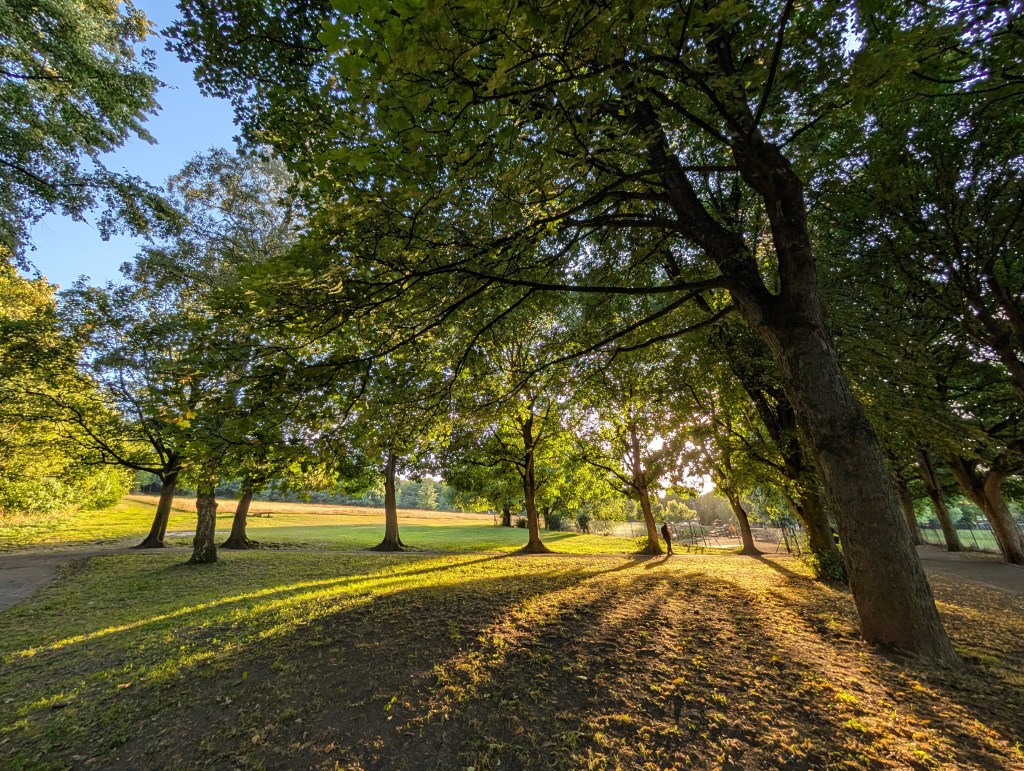
Design issues aside, which you’ll either love, hate, or feel indifferent about, there’s lots to like about the new phone, including the 7 years of updates that Google are promising.
Most importantly, for photographers, Google make some great cameras, and the Pixel 9 Pro XL is packed full of them, with consistent results from each camera. The ultra-wide-angle camera is brighter than the 8 series, the main camera performs extremely well, and the telephoto camera does a great job in most situations. The selfie camera also puts in a great performance. Low-light performance is best from the main camera, and good from the other cameras, with Google being well known for working well in low-light conditions.
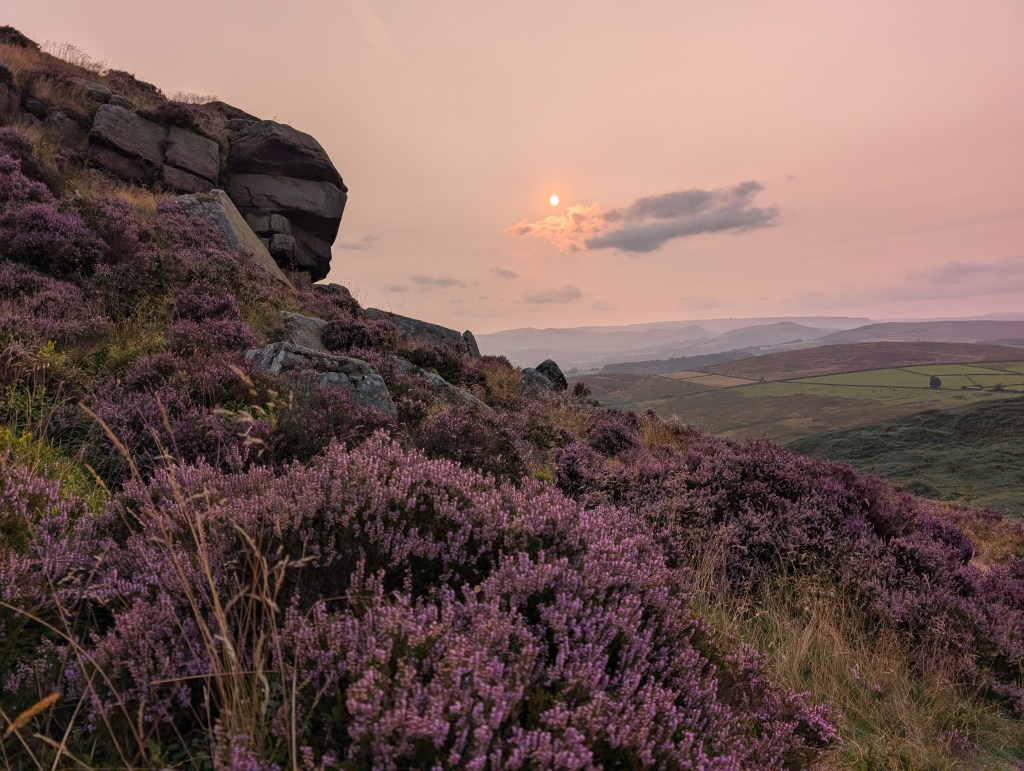
The optical quality 2x and 10x zoom options deliver some great looking results, and compared to the real 10x telephoto cameras found on other phones, it really does deliver the results. In terms of the camera system, this really is the best Google has offered, with the new Add-Me feature is a welcome addition.
One area still lacking, however, in terms of cameras, is the macro performance of the phone. Using the ultra-wide-angle camera gives an image lacking in detail, and it looks quite distorted compared to the results you get from a telephoto macro camera.

The small storage size of just 128GB, and the requirement for 4K video to be uploaded to Google’s cloud storage if you want 8K video upscaling, is a real shame, as other phones have offered on-camera 8K video recording for many years now. But if 8K video isn’t something you’re interested in, then you don’t need to worry about this.
In summary, the Google Pixel 9 Pro XL offers some of the best cameras ever seen on a phone (as long as you ignore the lacklustre macro performance), and a damn near perfect shooting experience, as long as you don’t need 8K video. Google has done a really impressive job of delivering great results from all the cameras, plus 2x and 10x images, which makes it feel like you’ve got five cameras on the back of the phone, rather than three.

Specifications
| Main camera | 50MP main camera, f/1.68, OIS (1/1.31inch), 24mm equivalent |
| Ultra-wide-angle camera | 48MP ultra-wide, f/1.7, with macro AF (1/2.55inch), 12mm equivalent |
| Telephoto camera | 48MP telephoto, f/2.8, 5x telephoto, OIS (1/2.55inch), 110mm equivalent. 2x ‘optical quality’ with 1x lens, 10x ‘optical quality’ with 5x lens. |
| Selfie camera | 42MP f/2.2 selfie camera with AF |
| Video | 4K video recording (60fps) (front/rear) – 8K video provided with upscaling via the cloud/internet |
| Screen | 6.8inch screen, 1-120hz, 2000/3000nits, Gorilla Glass Victus 2 |
| Battery | 5060mAh battery |
| Processor | Google Tensor G4 processor, 16GB RAM |
| OS | Android 14 – with 7 years of updates |
| Dimensions | 162.8 x 76.6 x 8.5mm |
| Weight | 221g |


